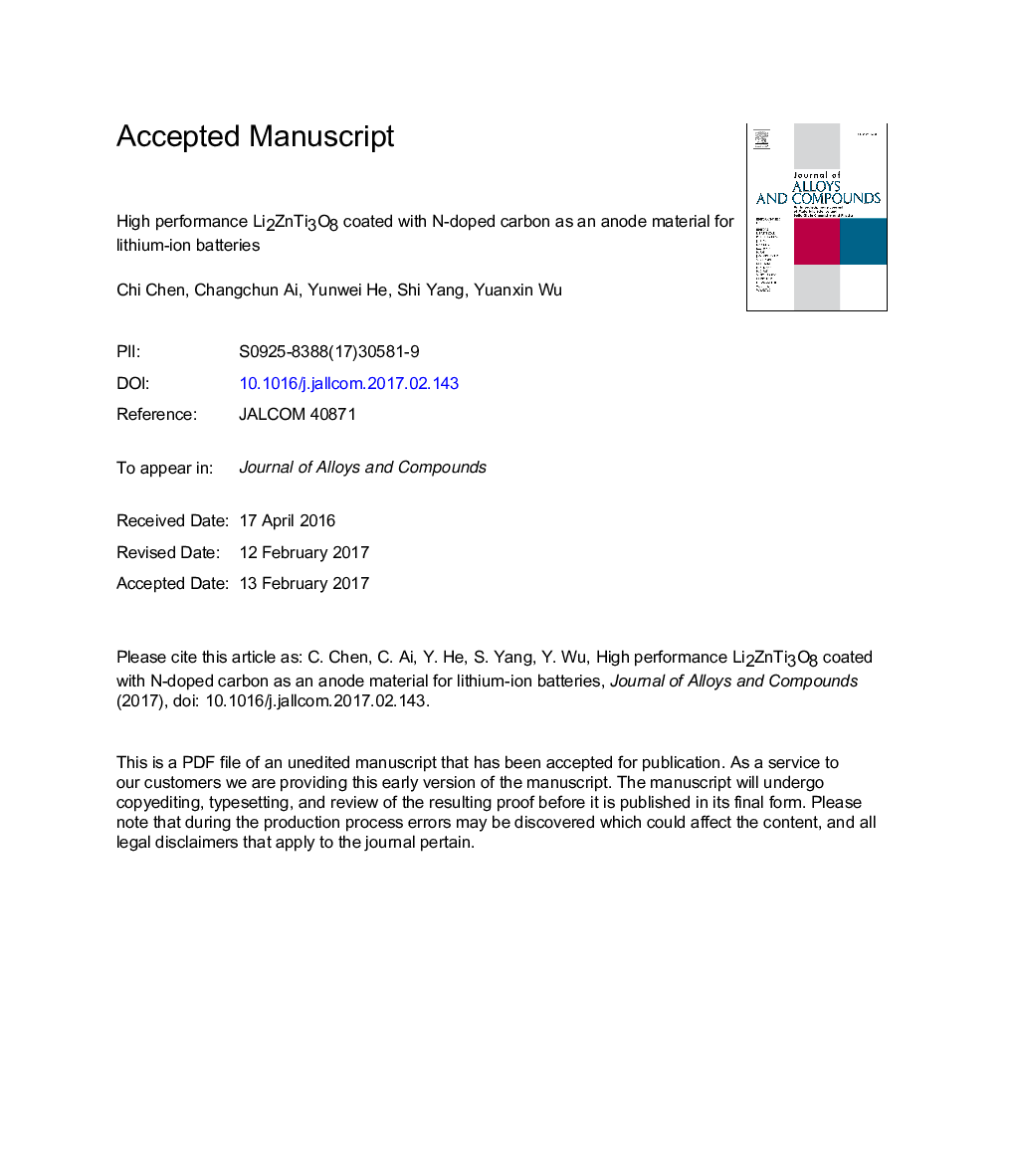| Article ID | Journal | Published Year | Pages | File Type |
|---|---|---|---|---|
| 5459819 | Journal of Alloys and Compounds | 2017 | 29 Pages |
Abstract
As compared to pure carbon (C) coating electrode materials, N-doped carbon (NC) decorating could further increase their electronic conductivity and interfacial stability, because the N element introduced into the carbon layer could create more C-vacancies and reduce the chemical activity of some surface ions. To verify this proposal, a series of N-doped carbon coated Li2ZnTi3O8 anode materials (NCLZTO) are prepared by utilizing a one-step solid-state method in which acetyl glucosamine is used as the N-doped carbon source. The subsequent charge-discharge experiments reveal that the designed sample NCLZTO-2 possesses the optimal carbon content (7 wt%). And as expected, the NCLZTO-2 sample also exhibits a remarkable improvement in the electrochemical properties in comparison to pristine LZTO and pure carbon coated Li2ZnTi3O8 (CLZTO). An initial discharge specific capacity of 264.2 mAh gâ1 is reached by NCLZTO-2 and a reversible capacity of 248.6 mAh gâ1 is still maintained after 500 cycles at 5 C with a capacity retention of 94.1%.
Related Topics
Physical Sciences and Engineering
Materials Science
Metals and Alloys
Authors
Chi Chen, Changchun Ai, Yunwei He, Shi Yang, Yuanxin Wu,
